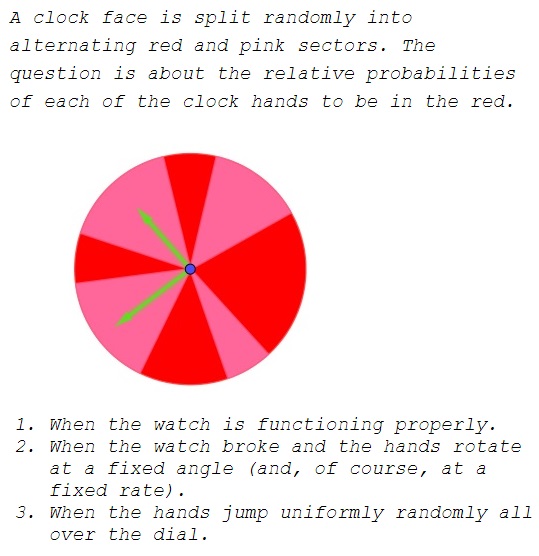Random Clock Hands
Problem

Discussion
As hard as it may be to believe, the events of the two hands hitting red is independent even when they are rigidly attached at a certain angle. Imagine throwing the first hand randomly, attaching the second hand at a certain angle, but only drawing the latter. Would you think that the second hand (which actually appears alone) is less random or has a different probability of hitting red than the lone first hand?
To add a little more rigor to the above argument, let $\textbf{R}$ be the set of red points on the unit circle. (Selecting a hand is equivalent to picking a point on the unit circle.) We may also think of it as a set $\textbf{R}_{o}$ in the interval $[0, 2\pi).$ Let $\alpha$ be the angle between the two hands. Selecting the second hand is equivalent to selecting a point in $[0, 2\pi)$ and then shifting it by $\alpha,$ i.e. selecting a random point in $[0, 2\pi) + \alpha,$ or which is the same $[\alpha, 2\pi + \alpha).$ The set $\textbf{R}_{o}$ undergoes a shift into $\textbf{R}_{o} + \alpha,$ which has the same relative size as the set $\textbf{R}_{o}.$ Furthermore, the original set $\textbf{R}$ is clearly left unchanged by the shift. What does change is the point at which the circle is cut before being unfolded into a segment.
Thus the answer two all three questions is $1.$
![]()
|Contact| |Front page| |Contents| |Probability|
Copyright © 1996-2018 Alexander Bogomolny71534356
